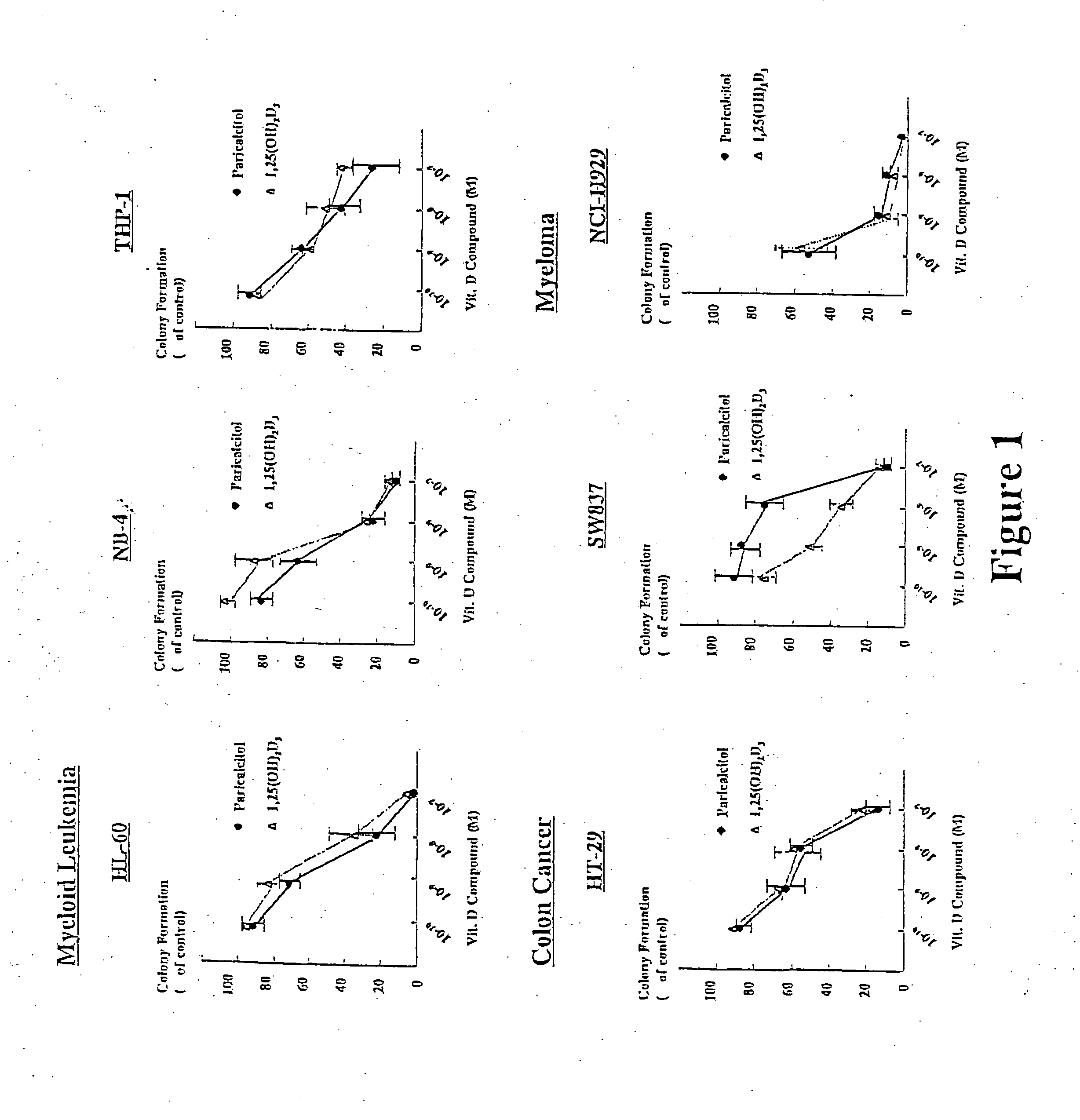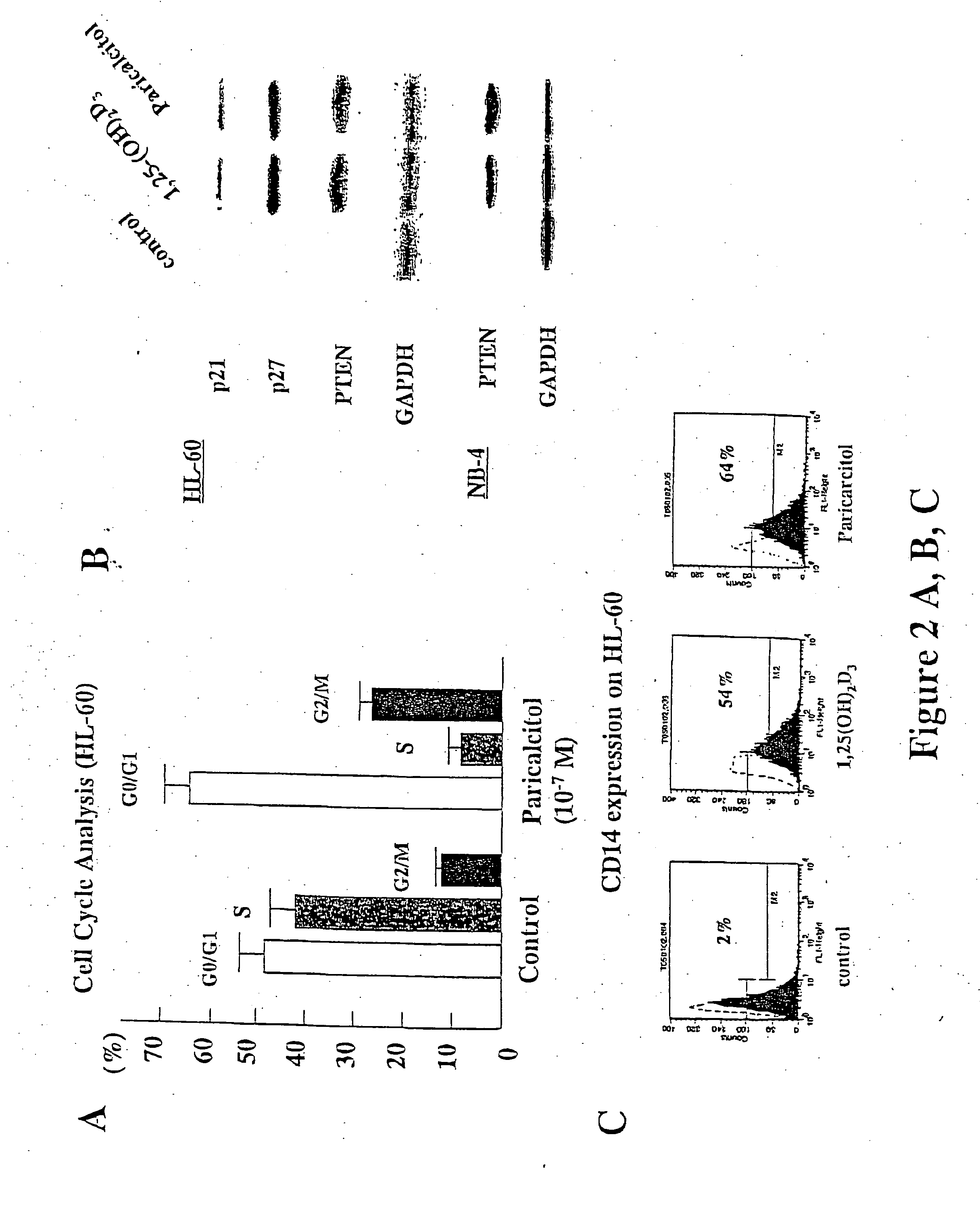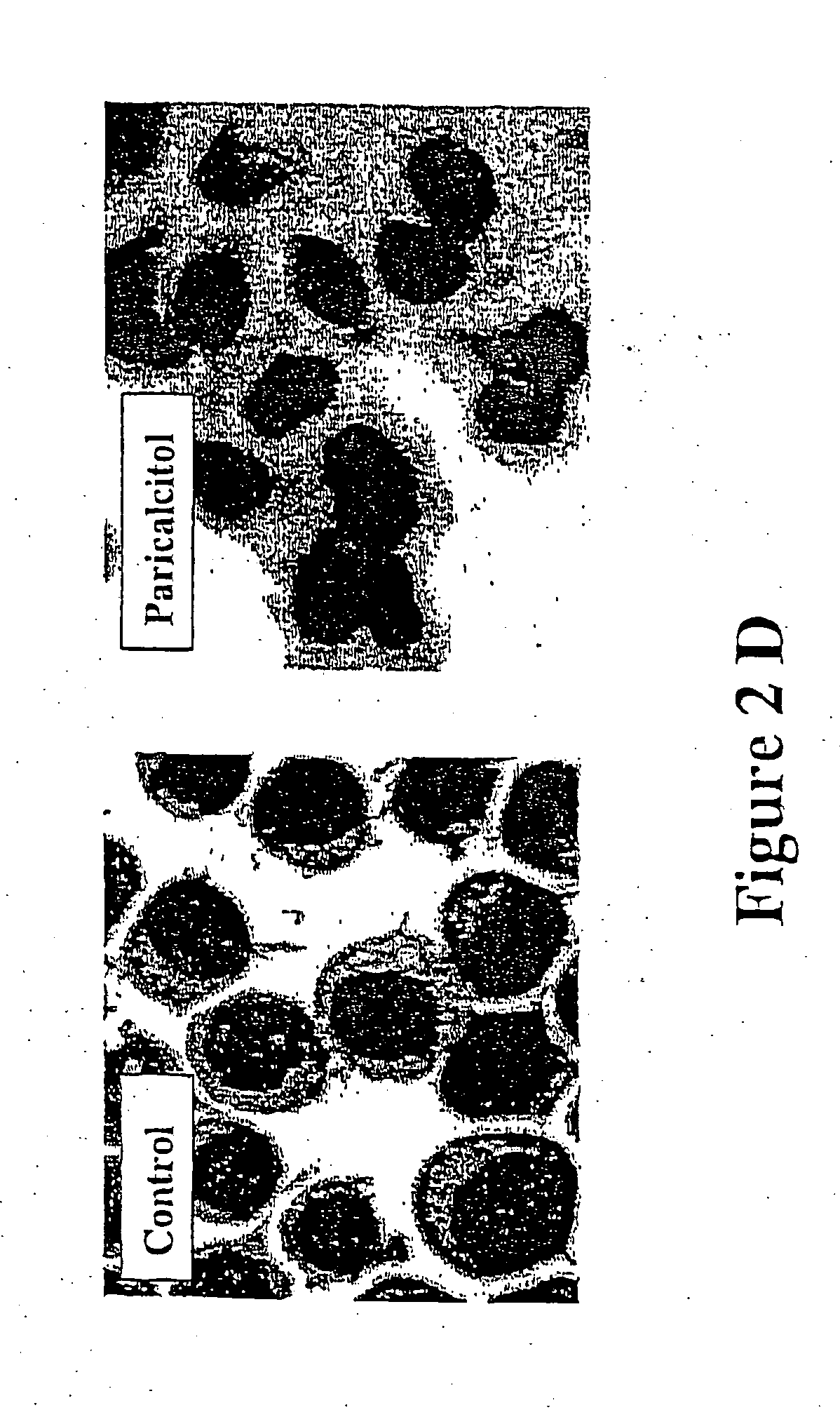Paricalcitol as a chemotherapeutic agent
a chemotherapeutic agent and paricalcitol technology, applied in the field of cancer therapeutics, can solve the problems of malignant tumor development, lack of specificity of cancer cells, numerous side effects, and the amount of radiation or chemotherapeutic agents that can be safely used, and achieve the effects of reducing cancer recurrence, reducing cancer cell proliferation, and reducing cancer recurren
- Summary
- Abstract
- Description
- Claims
- Application Information
AI Technical Summary
Benefits of technology
Problems solved by technology
Method used
Image
Examples
example i
Inhibition of Colony Formation by Paricalcitol
[0080] This example shows the inhibition of soft agar colony formation in myeloid leukemia, colon cancer, and myeloma cell lines by paricalcitol. The results are shown in FIG. 1.
[0081] A soft agar colony assay was used to test the effect of paricalcitol and 1,25(OH)2D3 on various cancer cell lines. For the soft agar colony assay, trypsinized and washed single-cell suspensions of cells were enumerated and plated into 24 well flat bottom plates using a two-layer soft agar system with a total of 1×103 cells / well in a volume of 400 ml / well, as described previously (Kubota et al., supra, 1998).
[0082] Cell lines used in this study were obtained from American Type Culture Collection (Rockville, Md.) and were maintained according to their recommendations. Myeloid leukemia cell lines (HL-60, NB-4, THP-1, U937), lymphoma cell lines (Raji, Ramos, Daudi, Jurkat, Jeko-1, JUDHL) and myeloma cell lines (RPMI-8226, ARH-77, NCI-H929) were grown in RPM...
example ii
Paricalcitol Effect on Cell Cycle and Differentiation
[0083] This example shows that paricalcitol affects cell cycle and differentiation status of myeloid leukemia cells.
[0084] For cell cycle analysis, cells were exposed to 10−7M 1,25(OH)2D3, 10−7M paricalcitol or vehicle control for either 3 or 4 days. Total cells, both in suspension and adherent, were collected, washed, suspended in cold PBS. Then cells were fixed in 75% chilled methanol and stained with propidium iodine. Cell cycle status was analyzed on a Becton Dickinson Flow Cytometer. The results are shown in FIG. 2A.
[0085] Western blot analysis was used to determine the levels of proteins involved in cell cycle and differentiation. For western blot analysis, cells were washed twice in PBS, suspended in lysis buffer [50 mM Tris (pH 8.0), 150 mM NaCl, 0.1% SDS, 0.5% sodium deoxycholate, 1% NP40, 100 mg / ml phenylmethylsulfonyl fluoride, 2 mg / ml aprotinin, 1 mg / ml pepstatin, and 10 mg / ml leupetin] and placed on ice for 30 min....
example iii
Paricalcitol Effect on Cell Cycle and Apoptosis
[0087] This example shows that paricalcitol affects cell cycle and apoptosis status of NCI-H929 cells.
[0088] Cell cycle analysis of NCI-H929 cells by flow cytometry was performed and is shown in FIG. 3A. HCI-H929 cells were cultured with either paricalcitol (10−7M) or 1,25(OH)2D3 (10−7M) for 72 hrs, harvested and stained with propidium iodine (PI). Control cells were treated with vehicle alone.
[0089] In FIG. 3B, quantitive analysis of apoptosis of NCI-H929 cell line exposed to either paricalcitol (10−7M), or 1,25(OH)2D3 (10−7M) for 96 hrs and analyzed by TUNEL assay is shown. Results represent the mean±SD of three independent experiments. A TUNEL assay was performed for immunohistochemical detection and quantification of programmed cell death at the single cell level, based on labeling of DNA strand breaks using the In Situ Cell Death Detection, POD (Roche, Indianapolis, Ind.). Early apoptosis was also detected by measuring annexin V...
PUM
 Login to View More
Login to View More Abstract
Description
Claims
Application Information
 Login to View More
Login to View More - R&D
- Intellectual Property
- Life Sciences
- Materials
- Tech Scout
- Unparalleled Data Quality
- Higher Quality Content
- 60% Fewer Hallucinations
Browse by: Latest US Patents, China's latest patents, Technical Efficacy Thesaurus, Application Domain, Technology Topic, Popular Technical Reports.
© 2025 PatSnap. All rights reserved.Legal|Privacy policy|Modern Slavery Act Transparency Statement|Sitemap|About US| Contact US: help@patsnap.com



